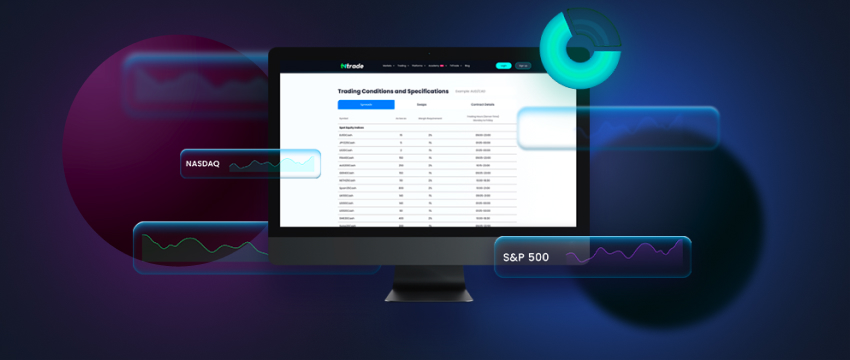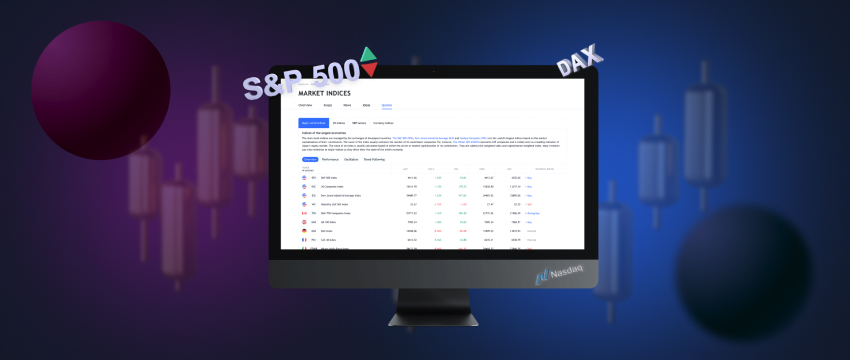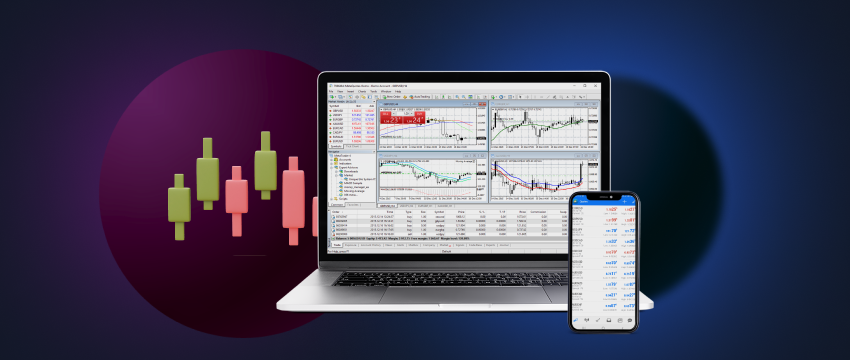Indices trading is the trading of Contracts for Difference (CFDs) on a stock market index. This is what we’ll be examining in this article. If you ask why trade indices let’s find it out.
What is a stock market index?
A stock market index refers to a portfolio of stocks of similar companies or stocks that meet certain criteria. Stock or share indices are used to measure how a group of assets performs. The value of an index rises if the price of its group of stocks increases. On the contrary, when stock prices in an index fall, so too do the value of the index.
Note: the terms indices and indexes are used interchangeably in the context of this article.

How are indices traded?
Indices trading on CFDs has become particularly popular among global traders. Trading on CFDs offers a trader the opportunity to make a gain from falling or rising prices. It involves speculating on the price movements of indices rather than having ownership of the asset. Stock market indices provide a way for traders to make informed trading decisions.
What impacts the value of an index?
The value of an index is determined by the rise and fall of stock prices. In other words, if stock prices in an index fall, so too do the value of the index. Alternatively, when stock prices rise, so does the index. Stock prices are impacted by factors like inflation, interest rates, economic news announcements, investor sentiment and company mergers or acquisitions. They are further influenced by global political instabilities, war, and natural disasters.
Different forms of indexes
Indexes are typically created in 3 different ways. A market value-weighted or capitalisation-weighted index puts more weight on the components (i.e., the individual companies) that have the most market value. A price-weighted index will add more weight to the most high-priced components. It is the average of all the company’s share prices. The stock of each company is weighted by its price per share. In contrast, with an equal-weighted index, each component is assigned the same weight, i.e., each stock in the index is given the same importance, regardless of the size of a company.
Common stock indexes
The Dow Jones Industrial Average (DJIA), Nasdaq Composite and S&P 500 in the US are some of the most well-known stock indexes in the world.
- The Dow Jones Industrial Average (DJIA) is a price-weighted index that includes stocks of 30 of the country’s most powerful enterprises. DJIA is also one of the most frequently used indices. It represents about one-quarter of the value of the entire stock market in the US and monitors how the 30 corporations perform.
- The Nasdaq Composite Index is a capitalisation-weighted index with more than 2,500 companies and 3k+ stocks listed on the Nasdaq exchange. It covers more companies from a wider scope of sectors than DJIA. The technology sector in particular makes up a large part of the index.
- S&P 500 is also a capitalisation-weighted index of large-cap stocks. It is considered more volatile than DJIA in that it represents a broader scope of industries.
Other types of indices include regional stock indices that represent specific geographic jurisdictions and sector-based indices which monitor specific sectors in the stock market.

Why trade indices?
CFD indices trading offers traders the ability to access the financial markets without having to invest directly in individual assets.
Other reasons to engage in CFD indices trading:
- You can trade the world markets by accessing global indices like the FTSE100, German DAX, etc.
- Since CFDs are typically leveraged, a smaller initial deposit (margin) is required. However, with leverage, the risk of losing large sums of money quickly is also high. This makes having an effective risk management strategy key.
- Stock indices reflect market sentiment and are a good way to measure market performance and market sentiment.
- CFD indices trading enables the diversification of one’s portfolio through greater exposure to a broader section of the market, and a larger basket of stocks.
- Indices are usually less volatile and more predictable than other asset classes as stocks within the same sector typically trend in a similar direction. So, for e.g., in bullish periods, indices will usually react similarly, following the same trend.
- Both beginner and professional traders can trade CFDs on indices based on their skills, expertise and trading objectives.

CFD indices trading platforms
Trading platforms offer a useful way to trade indices. Ideally, you’ll want a broker that delivers a leading indices trading platform with all the tools required to simplify trading. The platform should offer robust features like technical and fundamental analysis, technical indicators, algorithmic or automated trading, Expert Advisors (trading robots), technical charts, graphs, etc.
Open a trading account with T4Trade
T4Trade is a powerful online broker, popular with traders worldwide. Open a demo or live account with T4Trade and start trading on their MT4 platform, probably the most popular trading platform amongst global traders.
Opening a trading account with T4Trade is quick and easy:
- Visit the T4Trade website.
- Open a demo or live account.
- Choose the index you want to trade.
- Select your trading platform.
- Open a position, monitor, and close your first trade.
Once you have signed up, you’ll gain access to informative trading resources, economic and geopolitical news, and daily market insights. If you opt for a demo trading account, you’ll be able to test your trading strategies in a simulated trading environment, using virtual money.
Once you’ve gained the knowledge and skill needed to execute live trades using your own funds, consider moving to a live trading account.
위기 관리
Trading comes with high risk and the potential to lose all your money is very real. Identify the level of risk you’re willing to incur and build a risk management plan accordingly. Always exercise vigilance and caution.
Disclaimer: This material is for general informational & educational purposes only and should not be considered investment advice or an investment recommendation. T4Trade is not responsible for any data provided by third parties referenced or hyperlinked, in this communication.



